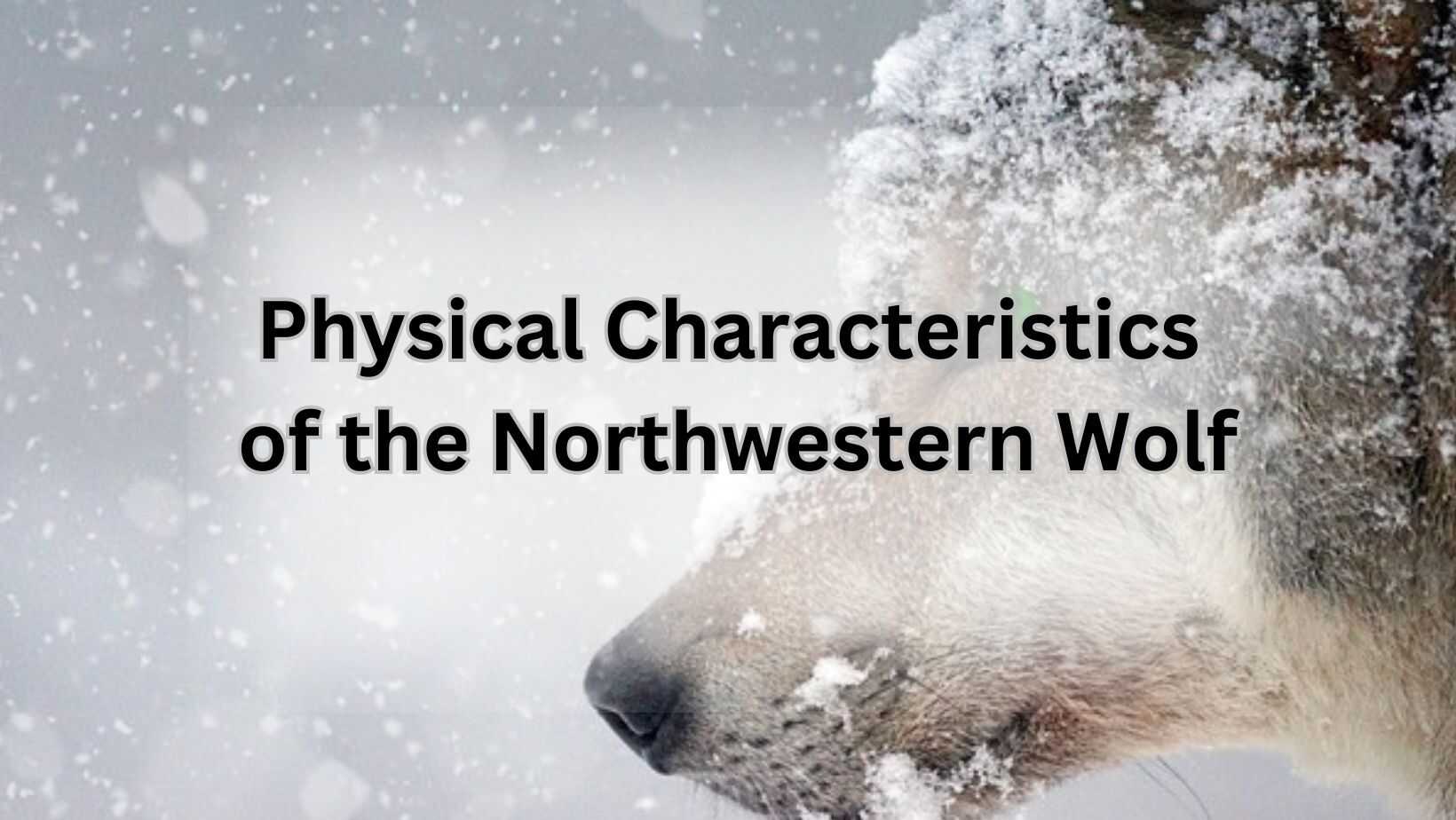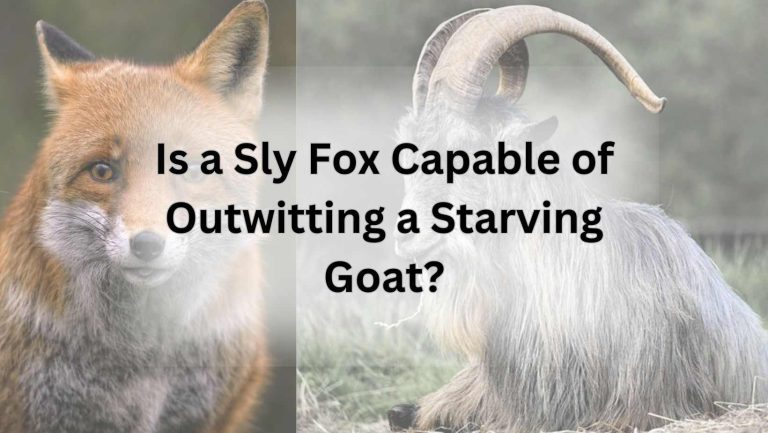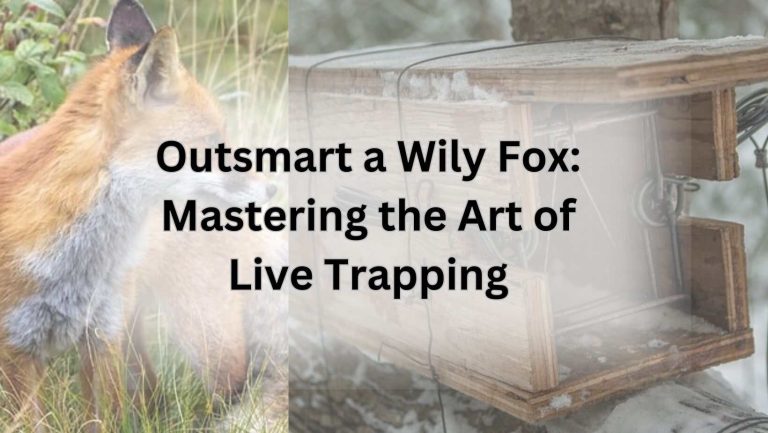Wild and Majestic: Unraveling the Mysteries of Northwestern Wolves

Introduction
The Northwestern wolf, also known as Canis lupus occidentalis, is a fascinating and majestic creature that roams the wild landscapes of North America. This subspecies of the gray wolf, also referred to as the timber wolf, plays a crucial role in the ecosystem and has captured the hearts of many wildlife enthusiasts like myself. Let’s delve into the world of the Northwestern wolf and uncover some interesting facts about this incredible predator.
Overview of the Northwestern Wolf
The Northwestern wolf, scientifically known as Canis lupus occidentalis, is a subspecies of the gray wolf native to the western regions of North America. These wolves are known for their stunning gray fur coats, piercing eyes, and strong, agile bodies. They are highly intelligent and social animals, often living in packs that work together to hunt and protect their territory.
Habitat and Distribution
The Northwestern wolf can be found in a variety of habitats, including forests, mountains, and tundra regions. They have a wide distribution range that extends from Alaska down to the Rocky Mountains in the United States. These wolves are adaptable creatures, able to thrive in diverse environments and climates.
Importance of Conservation
Conservation efforts are crucial to protect the Northwestern wolf population, as they face threats such as habitat loss, hunting, and climate change. By preserving their natural habitats and implementing sustainable wildlife management practices, we can ensure that these magnificent creatures continue to roam the wilderness for generations to come.
Physical Characteristics of the Northwestern Wolf
When you think of the majestic Canis lupus occidentalis, commonly known as the Northwestern wolf, you can’t help but be in awe of their impressive physical characteristics. Let’s dive into the fascinating world of these magnificent creatures!
Size and Weight
The Northwestern wolf is a true giant of the wild, with males weighing up to 100 pounds and standing at around 3 feet tall at the shoulder. Females are slightly smaller but equally formidable. These wolves are built for power and endurance, making them top predators in their habitat.
Fur Coloration
One of the most striking features of the Northwestern wolf is its beautiful fur coloration. Typically, these wolves have a mix of gray, black, and white fur that helps them blend seamlessly into their surroundings. Their coat not only provides camouflage but also protection from the harsh elements of their habitat.
Adaptations for Survival
The Northwestern wolf has evolved a range of adaptations that make it a formidable hunter and survivor. Their keen senses of sight, smell, and hearing allow them to track prey with precision. They also have powerful jaws and sharp teeth for taking down large prey like elk and deer. Additionally, their social structure in packs helps them work together to take down larger animals and protect their territory.
So, next time you find yourself in the presence of a Northwestern wolf, take a moment to appreciate the incredible physical characteristics that make them such remarkable creatures. From their size and weight to their fur coloration and survival adaptations, these wolves truly are a sight to behold in the wild!
Behavior and Social Structure
Now, let’s dive into the fascinating world of the northwestern wolf’s behavior and social structure. These majestic creatures, also known as Canis lupus occidentalis, exhibit complex behaviors that are essential for their survival in the wild.
Pack Dynamics
Northwestern wolves are known for their strong sense of family and pack loyalty. These packs are led by an alpha male and female, who are the dominant breeding pair. The rest of the pack consists of their offspring and other subordinate members. Each wolf has a specific role within the pack, whether it’s hunting, caring for the young, or maintaining the territory.
Communication Methods
Communication is key for northwestern wolves to coordinate their activities and maintain social bonds. They use a variety of vocalizations, such as howls, growls, and barks, to convey messages to other pack members. They also use body language, like tail wagging and ear positioning, to communicate their intentions and emotions.
Hunting Strategies
When it comes to hunting, northwestern wolves are highly skilled predators. They work together as a pack to take down large prey, such as elk and deer. Their hunting strategies involve cooperation, coordination, and strategic planning. Wolves will often use teamwork to surround their prey, tire them out, and then go in for the kill.
Overall, the behavior and social structure of the northwestern wolf are truly remarkable. From their tight-knit packs to their sophisticated communication methods and hunting strategies, these wolves are a true testament to the power of teamwork and cooperation in the wild.
Diet and Feeding Habits
When it comes to the diet and feeding habits of the Northwestern wolf, these majestic creatures are true carnivores, with a diet primarily consisting of meat. Let’s dive into the specifics of what they eat and how they go about getting their meals.
Primary Prey Species
The Northwestern wolf, also known as the Gray wolf or Timber wolf, preys on a variety of animals depending on their availability in their habitat. Their primary prey species include deer, elk, moose, and smaller mammals like rabbits and rodents. These wolves are skilled hunters and have adapted to take down prey much larger than themselves.
Hunting Techniques
Northwestern wolves are known for their cooperative hunting techniques, often working together in packs to take down larger prey. They use their keen senses of smell, sight, and hearing to track and ambush their targets. These wolves are strategic hunters, utilizing tactics like surrounding their prey and coordinating their attacks to ensure a successful hunt.
Role in Ecosystem
As top predators in their ecosystem, Northwestern wolves play a crucial role in maintaining the balance of the food chain. By controlling the populations of herbivores like deer and elk, they prevent overgrazing of vegetation and help promote biodiversity in their habitats. Their presence also influences the behavior of other species, shaping the overall dynamics of the ecosystem.
So, the next time you hear the haunting howl of a Northwestern wolf echoing through the wilderness, remember that these magnificent creatures are not just fierce predators but essential guardians of the natural world around them.
5. Reproduction and Life Cycle
As a Canid Wild Life Lover, let’s dive into the fascinating world of the northwestern wolf’s reproduction and life cycle. These majestic creatures, also known as Canis lupus occidentalis, have some intriguing behaviors when it comes to breeding and raising their young.
5.1 Breeding Season
The breeding season of the northwestern wolf, also referred to as the gray wolf or timber wolf, typically occurs in late winter to early spring. During this time, the lupus occidentalis engages in courtship rituals that involve howling, scent marking, and playful behavior with potential mates. It’s like a wolf version of a romantic comedy!
5.2 Gestation Period
After a successful courtship, the female wolf has a gestation period of around 63 days before giving birth to a litter of adorable wolf pups. Canis lupus mothers are incredibly nurturing and protective of their offspring, ensuring their survival in the harsh wilderness.
5.3 Parental Care
Once the wolf pups are born, the parental care provided by the northwestern wolf pack is truly remarkable. Both the mother and father wolves take turns hunting for food, regurgitating meals for the young pups, and teaching them essential survival skills. It’s a family affair in the wolf pack!
So, next time you hear the haunting howl of a northwestern wolf echoing through the forest, remember the intricate reproduction and life cycle of these incredible creatures. From breeding season antics to the dedicated parental care, the Canis lupus occidentalis truly embodies the spirit of family and survival in the wild.
Threats and Conservation Status
6.1 Human-Wolf Conflicts
Living in the wild can be tough, especially when you have to deal with us humans encroaching on your territory. The Northwestern wolf, also known as Canis lupus occidentalis, often faces conflicts with people due to livestock predation and competition for resources. These clashes can lead to negative perceptions of wolves and sometimes result in retaliatory killings. It’s like a real-life drama playing out in the wilderness!
6.2 Habitat Loss
Imagine coming home one day, only to find out that your cozy den has been bulldozed to make way for a new shopping mall. That’s the reality for the Northwestern wolf as habitat loss due to urbanization, agriculture, and logging threatens their survival. With their homes disappearing, these majestic creatures are forced to adapt to new environments or risk extinction. It’s a tough world out there for our furry friends.
6.3 Conservation Efforts
But fear not, dear readers, for there are heroes out there fighting to protect the Northwestern wolf! Conservation efforts, such as habitat restoration, reintroduction programs, and public education campaigns, aim to ensure the long-term survival of these magnificent animals. By raising awareness about the importance of preserving wolf populations and their ecosystems, we can all play a part in safeguarding the future of the Northwestern wolf. Together, we can make a difference and give these wolves a fighting chance in the wild!
Interactions with Other Species
When it comes to the northwestern wolf, also known as the gray wolf or timber wolf, their interactions with other species play a crucial role in the ecosystem. Let’s dive into how these magnificent creatures interact with their fellow animals in the wild.
Competition with Coyotes
One of the main competitors of the northwestern wolf is the clever coyote. These two canids often compete for similar prey, territory, and resources. While the smaller coyote may seem like an underdog, they are known for their cunning ways and ability to adapt to various environments. However, the northwestern wolf’s size and strength usually give them the upper paw in these interactions.
Relationships with Other Predators
The northwestern wolf has a complex relationship with other predators such as bears and mountain lions. While they may occasionally compete for food, these predators also play a crucial role in maintaining a balanced ecosystem. Wolves have been known to scavenge from bear kills, showing a unique form of cooperation among these apex predators.
Impact on Prey Populations
As top predators, northwestern wolves have a significant impact on prey populations in their habitat. By controlling the numbers of herbivores such as deer and elk, wolves help prevent overgrazing and maintain the health of the ecosystem. This delicate balance ensures that both predators and prey can coexist harmoniously in the wild.
Overall, the interactions of the northwestern wolf with other species are essential for the health of the ecosystem. From competition with coyotes to cooperation with bears, these majestic creatures play a vital role in maintaining the delicate balance of nature.
8. Cultural Significance
As a Canid Wild Life Lover with 20 years of experience, I have come to appreciate the cultural significance of the northwestern wolf, also known as Canis lupus occidentalis. Let’s dive into the fascinating world of how these majestic creatures have captured the hearts and minds of people throughout history.
8.1 Role in Indigenous Mythology
The northwestern wolf holds a prominent place in Indigenous mythology, where it is often revered as a powerful and wise spirit animal. In various Native American tribes, the wolf symbolizes loyalty, strength, and family unity. Legends are filled with stories of wolves guiding lost travelers, teaching valuable lessons, and embodying the spirit of the wilderness.
8.2 Symbolism in Modern Society
In modern society, the northwestern wolf continues to be a symbol of resilience and adaptability. Its image is often used to represent the importance of conservation efforts and the need to protect our natural world. From wildlife organizations to sports teams, the wolf’s fierce yet graceful presence is a reminder of the beauty and strength of the animal kingdom.
8.3 Conservation in Folklore
Conservation efforts for the northwestern wolf are not just limited to scientific research and habitat protection. Folklore and traditional stories play a crucial role in raising awareness about the importance of preserving these magnificent creatures. Through tales of bravery, wisdom, and the interconnectedness of all living beings, the northwestern wolf continues to inspire generations to come.
Research and Studies
Tracking and Monitoring Techniques
When it comes to studying the elusive Northwestern wolf, researchers have developed some ingenious tracking and monitoring techniques. From using GPS collars to satellite imagery, these methods have provided valuable insights into the movements and behaviors of these majestic creatures. It’s like playing a high-stakes game of hide and seek, but with wolves instead of children!
Genetic Studies
Genetic studies have allowed scientists to delve deep into the DNA of the Northwestern wolf, uncovering fascinating information about their lineage and evolutionary history. It’s like solving a genetic puzzle where the pieces are made of fur and howls!
Behavioral Observations
Observing the behavior of Northwestern wolves in their natural habitat is like watching a real-life soap opera unfold before your eyes. From alpha dominance struggles to playful pup antics, these wolves never fail to entertain and amaze. It’s like tuning in to the wildest reality show on Earth!
In the world of Northwestern wolf research, tracking and monitoring techniques play a crucial role in understanding the movements and behaviors of these magnificent creatures. Genetic studies delve deep into the DNA of the Northwestern wolf, providing insights into their lineage and evolutionary history. Behavioral observations offer a glimpse into the fascinating social dynamics and interactions within wolf packs, making it a thrilling experience akin to watching a captivating wildlife documentary.
Conclusion
As a Canid Wild Life Lover with two decades of experience, it is clear that the Northwestern wolf, also known as Canis lupus occidentalis, plays a crucial role in the ecosystem. Coexistence with these majestic creatures is essential for maintaining the delicate balance of nature. However, future challenges such as habitat loss and human-wolf conflicts pose significant threats to their survival. It is imperative that we take action to conserve and protect these magnificent animals for future generations to enjoy.
Importance of Coexistence
Living in harmony with the Northwestern wolf is not only beneficial for the ecosystem but also for our own well-being. These apex predators help regulate prey populations, preventing overgrazing and maintaining a healthy balance in the food chain. By respecting their natural habitat and understanding their behavior, we can coexist peacefully with these fascinating creatures.
Future Challenges
Despite their importance, Northwestern wolves face numerous challenges in today’s world. Habitat loss due to human encroachment, poaching, and climate change are major threats to their survival. It is crucial that we take proactive measures to protect their habitats and ensure their continued existence in the wild.
Call to Action for Conservation
Conservation efforts are essential to safeguard the future of the Northwestern wolf. By supporting organizations dedicated to wolf conservation, spreading awareness about their plight, and advocating for policies that protect these animals, we can make a difference in their survival. Together, we can ensure that the howl of the Northwestern wolf continues to echo through the forests for generations to come.






